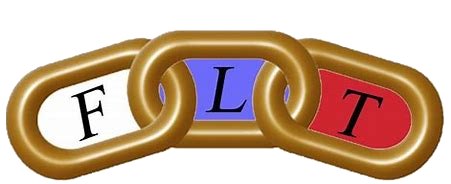
From Past to Present
History of Odd Fellowship
Odd Fellows Origins England, Circa 1700’s
How did Odd Fellows get they’re name?
During the 18 century, in England, people were facing a lot of challenges. Life was tough, often lawless and desperate. Medicine was still crude and in a primitive stage. Life expectancy was about 45 to 50 years. There were lots of sickness, orphaned children, widowed mothers and many people who could not afford to pay for a decent burial for the dead. There was still no welfare state, national health system or social security insurances system. At that time, many people were also given over to selfishness and indifference. People fended only for themselves, living without much compassionate regard for their unfortunate fellow humans.
However, a group of ordinary people from different trades and walks of life deviated from the trends of the times and found it necessary to band together as brothers to help each other, their families and communities in need. They would contribute some of their hard-earned wages to a common fund which they could use for unfortunate times such as sickness, losing a job and even death. They would work together to help each other and the unfortunate families get back on their feet, whether it was rebuilding a barn that had burned or putting in a new crop after a devastating season. Because it was rather uncommon or an “odd” thing to do to help one another, to come to each other’s aid and to offer social relief, people who followed noble values such as benevolence, charity and fraternalism were labeled as “Odd Fellows”.
Because record keeping was not of much importance in the past, it is admitted that the exact date of its first founding is “lost in the fogs on antiquity”. Some historians trace its roots back to the Medieval Trade Guilds of the 12th and 13th centuries. Others estimate that it existed before 1650.
What is clear is that there were already numerous Odd Fellows groups in England by the 1700s. The earliest surviving printed record is said to be the “rules of Odd Fellows”, Loyal Aristarchus Lodge No. 9, in England dated March 12, 1748. This establishes the fact that this lodge had been operating for some time prior thereto, and its number indicates that at least eight other lodges had existed up to that time.
King George the IV of England, while Prince of Wales, was admitted to membership around 1780. In 1798. It was mentioned that the original “United Order of Odd Fellows” consisted of a total of 50 lodges in England and its environs. Many pubs in Britain are named “The Odd Fellows” or “Odd Fellows Arms”. Invariably these were past meeting places of Odd Fellows Lodges.
For a time, Fraternal groups such as the Off Fellows were suppressed in England, but by 1803 the Odd Fellows were revived by an organization called the “London Union Odd Fellows” which later became known as the “Grand Lodge of England” and assumed authority over all Odd Fellow lodges in that country.
In 1810, several lodges located in the Manchester area declared themselves as an “Independent Order of Odd Fellows" with the title “Manchester Unity”. In 1814, they elected officers and proceeded to standardize degree work of the lodges. With their improved system, they were able to persuade other Odd Fellow lodges to join their unity. They also chartered the Independent Order of Odd Fellows in North America years after.
Odd Fellows American Origins, Circa 1819
The Independent Order of Odd Fellows was founded on the North American Continent in Baltimore, Maryland, on April 26, 1819 when Thomas Wildey and four members of the Order from England instituted Washington Lodge No. 1. This lodge received its charter from Manchester Unity of Odd Fellows in England. At that time, the city was suffering both a yellow fever epidemic and mass unemployment so they dedicated the organization to “Visit the sick, relieve the distress, bury the dead and educate the orphans.”
Thomas Wildey, founder of Odd Fellowship in North America, was a man of immense vitality, humor, and warmth. He was born in England in 1782. He was left an orphan five years later, and the Odd Fellows pledge to “Educate the Orphan”, sprang from his personal childhood experiences. At the age of 14, Wildey went to live with an uncle. After he had 9 years of schooling, he became an apprentice to a maker of coach springs. He joined the Odd Fellows in 1804.
When restlessness brought Wildey to America in 1817, the British were still unplpular in the States because of the War of 1812. In that year Baltimore was suffering both a yellow fever epidemic and mass unemployment. An outgoing personality, Wildey missed companionship and advertised in the newspaper to determine if there were any other Odd Fellows in Baltimore; he requested them to meet him at the Seven Stars Inn. On April 26, 1819, Wildey and the four men who responded to the advertisement met and began the process that would lead to the forming of the Independent Order of Odd Fellows in North America, dedicating the Order to achieve philanthropic goals. Other Englishmen who were Odd Fellows, had grouped in the states along the Eastern Seaboard, and Wildey gathered them all into the newly formed fraternity.
He traveled widely to set up lodges in the most recently settled parts of the country. At the time of his death in 1861, there were more than 200,000 members of the Independent Order of Odd Fellows in 42 states.
On September 20, 1851, I.O.O.F. became the first national fraternity to accept both men and women when it adopted the Degree of
Rebekah. Brother Schuyler Colfax (Vice President of the United States 1869-1873 under Brother President Ulysses S. Grant) was the force behind the movement.







